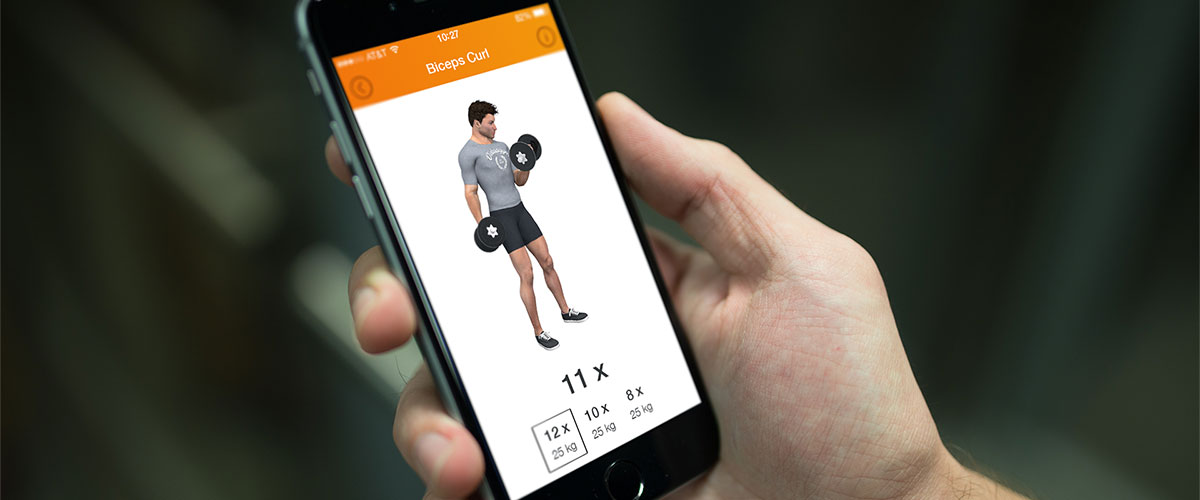People are going digital nowadays because the world demands connection. Being connected is not even a choice anymore; it’s a must. Digitalisation is picking up pace in the fitness industry as well .
In recent years personal training has seen a huge boost in popularity. Personal training is a great help for everyone who wants to make a lifestyle change and make progress in eating habits and exercise. Limiting factors for classic personal training, however, are the limited contact between the coach and the client, and the fact that the costs are still prohibitive to a large number of people.
Online personal training is a perfect alternative that overcomes these two limitations and that’s why there is a clear shift taking place in the fitness industry. The coaching activities of a lot of personal trainers are moving to the online world. Thinking about moving into online personal training? In this article, we’ll look at the various types of online personal training, some common bottlenecks, and how to overcome these issues.
Why Start with Online Personal Training?
First, let’s start with why you should consider moving into online personal training. Here are some (though not all) of the considerations:
- Online personal training is cost-effective, both for you and your clients
- Scheduling becomes much easier. You’re not restricted by business hours anymore
- You can be much more time-efficient
- Location isn’t a factor - your potential client base is much larger
The impact of these factors depend partly on the type of online personal training you provide.
Types of Online Personal Training
Online personal training comes in a variety of flavors and can be offered with several levels of personal attention:
- “Members Only” coaching video access. For a nominal monthly fee, clients get access to exercise, nutrition, and motivational videos. The benefit to this approach is that it’s affordable for both you and your clients. The obvious drawback is that these videos offer 0% personalization.
- Collective coaching. You can offer workout templates and general nutrition plans, workouts of the month, and so on, which are available to a large number of clients. Subsequently, you guide and motivate these clients via group messaging.
- Online personal training. Clients get personalized workout and nutrition plans, and can reach you online for one-on-one coaching. This can be via email, webcam, phone, WhatsApp, and so on.
Within and between these types of coaching, of course there can be a lot of variety in terms of personalization and personal contact. In any case, there are several shared characteristics: you don’t see your clients face to face anymore, you create and your workout and nutrition plans online, you communicate with your clients via the internet, and you track their progress online.
Overcoming Common Issues in Online Personal Training
Let’s be honest. No business model is perfect. When you offer online personal training, you can run into issues too. Two common ones are keeping clients motivated and progress tracking.
Keeping Your Clients Motivated Online
Classic personal training has one advantage over online personal training: it’s much easier to motivate people to give 100% during their workouts - or start them, for that matter. While high costs and physical travel can be barriers to personal training, they also tend to function as motivators: you pay a lot and you go somewhere, so you might as well put in the effort! For online personal training, you rely purely on the power of your message and the strength of your communication tools.
Let’s assume your message is solid. You know how to motivate people. After that, you just need the right mix of tools: social media channels, a mobile app, email, an online platform with discussion groups, WhatsApp. Mix and match, see what works best for you. Keep in mind, though, that it would be easier for both you and your clients to have a bunch if not all your communication tools integrated in one place, so you don’t have to juggle too many channels during your work week.
![]()
Online Progress Tracking With Wearables
Progress tracking is essential in establishing an online personal training model. But how should you keep track of the client’s lifestyle and progress? This is where smart monitors and wearables such as activity trackers and body scales come in as the perfect extension of an online personal training business.
Quantified Self is having a major impact on the fitness industry , and wearables are rapidly becoming indispensable in coaching the new generations of clients. Coaching your clients with the use of wearables will give you immediate insight in the progress and lifestyle data of your clients. Progress tracking for online personal training has always been a bottleneck, since you rely on the accurate input from your clients and lack insight in their daily activity. This bottleneck can be overcome with the use of wearables and other smart monitors. Using wearables such as Fitbit , Garmin or more affordable options such as NEO Health , it becomes possible to coach your clients better based on actual data, which is key to online personal training. By tracking data such as steps taken/distance traveled, you get a clear indication of the daily activity of clients. Scales measure weight, muscle mass, body fat percentage, and more. By integrating these tools into your online personal training platform, the barrier of progress tracking is removed by turning it into a hassle-free experience. Using this data, trainers can react by adjusting workouts and nutrition plans, and reassign them to their clients.
The Future of Personal Training?
Classic personal training won’t disappear any time soon. It is still one of the best ways to motivate clients, and deliver results. But in an online world, the options for your clients have become much more varied. Diversification is an issue that warrants serious consideration.
As a fitness professional, now is the time to adapt to the changing market. If you are serious about moving into online personal training, invest in a toolset that will help you run your new service efficiently. And consider the fact that wearables can function as the missing gap between your clients’ daily lives and the time they spend in contact with you. Combine these tools and feature to deliver a solid client experience and service level that will help your clients reach their goals.
Sign Up For Our Weekly Newsletter




